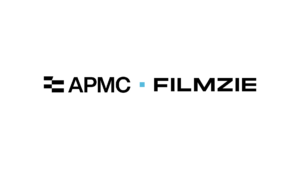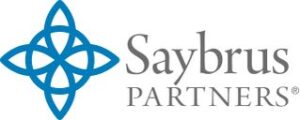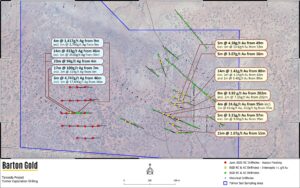SHELTON, CT / ACCESS Newswire / July 14, 2025 / NanoViricides, Inc., a publicly traded company (NYSE Amer.:NNVC) (the “Company”), and a clinical stage, leading global pioneer in the development of broad-spectrum antivirals based on host-mimetic nanomedicine technology that viruses cannot escape, announces that the design of the adaptive clinical trial protocol for the treatment of MPox Virus Clade Ia and Ib infections and disease is nearly complete.
The adaptive clinical trial is designed to provide information on three important aspects in a single, compact clinical trial:
-
safe and effective dosing regimen in patients,
-
safety and tolerability of the drug in patients, and
-
antiviral effectiveness of the drug in patients.
The overall clinical trial will enroll approximately 80 patients.
“This is an important milestone towards filing of the clinical trial application and starting the clinical trial,” said Anil R. Diwan, PhD, President and Executive Chairman of the Company, adding, “Our CRO and the Principal Investigator have created a marvelous design that is both frugal and efficient while providing all of the information necessary for understanding the safety and effectiveness of NV-387 for treating MPox disease.”
Currently there is no drug approved for the treatment of MPox disease that is actually effective for treating the disease.
NV-387, if it shows effectiveness, will be the very first drug that has shown effectiveness in human clinical trial of an orthopoxvirus.
If NV-387 is found to be effective in this Phase II clinical trial, the Company intends to continue further development of NV-387 for treatment of orthopoxvirus infections under a US FDA IND towards studies as needed for regulatory approval of NV-387 for the treatment of MPox as well as Smallpox indications. The Company intends to obtain regulatory approval in the African Region as well, which is likely to arrive before a US approval, and also seek approvals in the European Union and other countries and regions.
MPox is an Orphan disease in the USA and treatment of MPox by NV-387 is eligible for Orphan Drug Designation by the US FDA with attendant benefits.
Smallpox is a bioterrorism agent of concern in the USA as well as across the world and is an important revenue opportunity for the Company. Tecovirimat sales to the US Government alone have netted SIGA, the drug holder, over $600 million through December 31, 2024, according to SIGA’s annual report to the SEC [1] .
The adaptive, randomized, SOC controlled clinical trial will proceed in two parts:
In Phase IIa part, an oral dose of the drug NV-387 given twice daily initially for six days will be compared with the standard of care (SOC) at the hospital for treatment of MPox disease. Patients will be sequestered in the hospital and will be evaluated daily for clinical drug safety and tolerability parameters, and clinical MPox disease evaluation parameters. Additionally, lab evaluations including clinical blood chemistry, CBC, cytokines, urinalysis, ECG, X-rays when necessary, and virological assays will be conducted every 3 days. Based on the results, the Principal Investigator will determine whether additional days of drug dosing can be well tolerated and can improve on effectiveness. If so, the patients will continue to receive same dosing for six more days with same evaluations. The patients will be followed until full resolution of the MPox disease.
There will be two arms in this Phase IIa: The New Treatment Arm of 10 patients with NV-387 dosing plus SOC and the control SOC Arm of 10 patients. The dosing regimen for Phase IIb will be determined on the basis of Phase IIa results.
In the Phase IIb part, the clinical trial will be in a 2:1 randomized patients base with approximately 40 subjects in the New Treatment Arm and 20 patients in the SOC Arm. Evaluations will be similar to those in Phase IIa, with more emphasis given to specific points that may have come up in Phase IIa regarding safety, tolerability, as well as efficacy.
The Phase IIa will be conducted at a single site in Democratic Republic of Congo (DRC). Phase IIb may be expanded to include additional sites within DRC as well as other countries experiencing severe MPox outbreak in the African Region.
The “NV-387 Oral Gummies” drug product formulation will be employed in the Phase II. This is a soft solid formulation that is designed to stick in the oral cavity and dissolve naturally over time, with no solid object (pill or capsule) swallowing necessary. This is important for MPox because MPox causes lesions on mucosal surfaces that make swallowing painful and difficult. MPox is primarily known for the explicit characteristic painful rash on the external skin, but it is a significantly more severe disease than just a skin rash.
Two drugs, Tecovirimat and Brincidofovir were approved by the US FDA for Smallpox and MPox on the basis of the US FDA “Animal Rule,” i.e. based on animal infection and treatment studies only to demonstrate efficacy, and a safety/tolerability human clinical trial.
Tecovirimat failed in clinical trials for the treatment of MPox with no improvement over the standard of care. Brincidofovir was abandoned in a clinical trial of MPox due to first three patients coming down with drug induced liver injury. Despite this, brincidofovir was recently resurrected under an international coalition led by US CDC and first patient was dosed around January 2025 in the “MOSA” clinical trial [2] . The topline results were expected to be announced as early as CY Q1 (March 2025) and efficacy topline data were expected no later than CY Q2 (June, 2025). No press releases post initiation of the MOSA clinical trial could be found.
The MPox virus circulating in DRC and neighboring regions is of Clade 1a and Clade 1b subtypes, with the latter predominant. Clade 1b is more transmissible of the two, which is why it has resulted in a sustained epidemic. The MPox Clade 1a case fatality rate (CFR) is about 3%-11% whereas the CFR for Clade 1b is about 1%. The MPox Clade 2b is the virus causing continuing cases in the Western world, which causes a much less severe disease than Clade 1a/1b and has a very low CFR, according to CDC. Sporadic cases of Clade 1 in the Western world continue to occur. Four separate travel-related MPox Clade 1 cases reported in the USA that did not result in any further spread, since November 2024, according to the CDC [3] .
Clearly, the threat of MPox Clade 1 causing a potential epidemic in the USA cannot be ignored, and readiness with a drug that works against the same is important to achieve.
NanoViricides, Inc. (the “Company”) (www.nanoviricides.com) is a publicly traded (NYSE-American, stock symbol NNVC) clinical stage company that is creating special purpose nanomaterials for antiviral therapy. The Company’s novel nanoviricide™ class of drug candidates and the nanoviricide™ technology are based on intellectual property, technology and proprietary know-how of TheraCour Pharma, Inc. The Company has a Memorandum of Understanding with TheraCour for the development of drugs based on these technologies for all antiviral infections. The MoU does not include cancer and similar diseases that may have viral origin but require different kinds of treatments.
The Company has obtained broad, exclusive, sub-licensable, field licenses to drugs developed in several licensed fields from TheraCour Pharma, Inc. The Company’s business model is based on licensing technology from TheraCour Pharma Inc. for specific application verticals of specific viruses, as established at its foundation in 2005.
Our lead drug candidate is NV-387, a broad-spectrum antiviral drug that we plan to develop as a treatment of RSV, COVID, Long COVID, Influenza, and other respiratory viral infections, as well as MPOX/Smallpox infections. Our other advanced drug candidate is NV-HHV-1 for the treatment of Shingles. The Company cannot project an exact date for filing an IND for any of its drugs because of dependence on a number of external collaborators and consultants. The Company is currently focused on advancing NV-387 into Phase II human clinical trials.
The Company is also developing drugs against a number of viral diseases including oral and genital Herpes, viral diseases of the eye including EKC and herpes keratitis, H1N1 swine flu, H5N1 bird flu, seasonal Influenza, HIV, Hepatitis C, Rabies, Dengue fever, and Ebola virus, among others. NanoViricides’ platform technology and programs are based on the TheraCour® nanomedicine technology of TheraCour, which TheraCour licenses from AllExcel. NanoViricides holds a worldwide exclusive perpetual license to this technology for several drugs with specific targeting mechanisms in perpetuity for the treatment of the following human viral diseases: Human Immunodeficiency Virus (HIV/AIDS), Hepatitis B Virus (HBV), Hepatitis C Virus (HCV), Rabies, Herpes Simplex Virus (HSV-1 and HSV-2), Varicella-Zoster Virus (VZV), Influenza and Asian Bird Flu Virus, Dengue viruses, Japanese Encephalitis virus, West Nile Virus, Ebola/Marburg viruses, and certain Coronaviruses. The Company intends to obtain a license for RSV, Poxviruses, and/or Enteroviruses if the initial research is successful. As is customary, the Company must state the risk factor that the path to typical drug development of any pharmaceutical product is extremely lengthy and requires substantial capital. As with any drug development efforts by any company, there can be no assurance at this time that any of the Company’s pharmaceutical candidates would show sufficient effectiveness and safety for human clinical development. Further, there can be no assurance at this time that successful results against coronavirus in our lab will lead to successful clinical trials or a successful pharmaceutical product.
This press release contains forward-looking statements that reflect the Company’s current expectation regarding future events. Actual events could differ materially and substantially from those projected herein and depend on a number of factors. Certain statements in this release, and other written or oral statements made by NanoViricides, Inc. are “forward-looking statements” within the meaning of Section 27A of the Securities Act of 1933 and Section 21E of the Securities Exchange Act of 1934. You should not place undue reliance on forward-looking statements since they involve known and unknown risks, uncertainties and other factors which are, in some cases, beyond the Company’s control and which could, and likely will, materially affect actual results, levels of activity, performance or achievements. The Company assumes no obligation to publicly update or revise these forward-looking statements for any reason, or to update the reasons actual results could differ materially from those anticipated in these forward-looking statements, even if new information becomes available in the future. Important factors that could cause actual results to differ materially from the company’s expectations include, but are not limited to, those factors that are disclosed under the heading “Risk Factors” and elsewhere in documents filed by the company from time to time with the United States Securities and Exchange Commission and other regulatory authorities. Although it is not possible to predict or identify all such factors, they may include the following: demonstration and proof of principle in preclinical trials that a nanoviricide is safe and effective; successful development of our product candidates; our ability to seek and obtain regulatory approvals, including with respect to the indications we are seeking; the successful commercialization of our product candidates; and market acceptance of our products.
The phrases “safety”, “effectiveness” and equivalent phrases as used in this press release refer to research findings including clinical trials as the customary research usage and do not indicate evaluation of safety or effectiveness by the US FDA.
FDA refers to US Food and Drug Administration. IND application refers to “Investigational New Drug” application. cGMP refers to current Good Manufacturing Practices. CMC refers to “Chemistry, Manufacture, and Controls”. CHMP refers to the Committee for Medicinal Products for Human Use, which is the European Medicines Agency’s (EMA) committee responsible for human medicines. API stands for “Active Pharmaceutical Ingredient”. WHO is the World Health Organization. R&D refers to Research and Development.
Contact:
NanoViricides, Inc.
info@nanoviricides.com
Public Relations Contact:
ir@nanoviricides.com
[1] https://www.sec.gov/ix?doc=/Archives/edgar/data/0001010086/000143774925007056/siga20241231_10k.htm
View the original press release on ACCESS Newswire

















